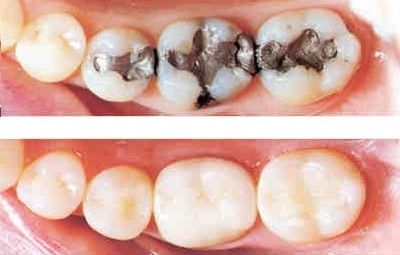Tooth Filling

A filling is a way to restore a tooth damaged by decay back to its normal function and shape. Decayed teeth are usually treated by removing the decayed portion and then “fill” the area on the tooth where the decayed material was removed with filling material. By closing off spaces where bacteria can enter, a filling also helps prevent further decay.
Fillings are also used to repair cracked or broken teeth and teeth that have been worn down from misuse (such as from nail-biting or tooth grinding).
There are a variety of different materials that can be used for filling teeth. No one type of filling is best for everyone. What’s right for you will be determined by the extent of the repair, whether you have allergies to certain materials, wherein your mouth the filling is needed, and the cost. Considerations for different materials include:
Gold fillings are made to order in a laboratory and then cemented into place. Gold inlays are well-tolerated by gum tissues and may last more than 20 years. For these reasons, many authorities consider gold the best filling material. However, it is often the most expensive choice and requires multiple visits.
Amalgam fillings are more commonly known as silver or mercury fillings. They are made up of silver, tin, copper, zinc, and mercury. They are resistant to wear and relatively inexpensive. However, due to their dark color, they are more noticeable than porcelain or composite restorations and are not usually used in very visible areas, such as front teeth.
Composite resin fillings are more commonly known as white fillings, tooth-colored fillings, and direct veneers. They are made up of very tiny pieces of silica surrounded by a plastic resin usually composed of bis-GMA. They are matched to be the same color as your teeth and therefore used where a natural appearance is desired. The ingredients are mixed and placed directly into the cavity, where they harden. Composites may not be the ideal material for large fillings as they may chip or wear over time.
Porcelain fillings are called inlays or onlays and are produced to order in a lab and then bonded to the tooth. They can be matched to the color of the tooth and resist staining. A porcelain restoration generally covers most of the tooth. Their cost is similar to gold.










